We’ve all heard the saying, “opposites attract.” And it’s true, relationships can really shine when couples take an interest in each other’s hobbies, even if they’re worlds apart. But sometimes, those differences can spark unexpected tension.
For instance, one woman shared how her husband, who isn’t much of a hiker, surprised her by booking a $1,600 Mount Everest Base Camp trip. What was meant to be a romantic gesture soon turned stressful when social media stories about accidents and physical challenges made her anxious. She wanted to cancel, but her husband didn’t and that’s when their differing travel styles started to cause friction.
The woman praised her husband for being thoughtful and showing love through small acts of service

Image credits: Getty Images / Unsplash (not the actual photo)
But she also revealed how his surprise plan for an anniversary trip to Everest Base Camp left her feeling anxious and deeply concerned


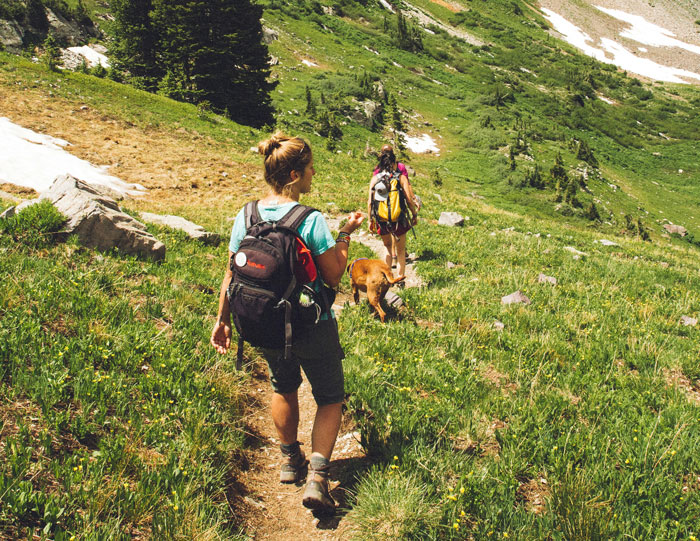
Image credits: Holly Mandarich / Unsplash (not the actual photo)

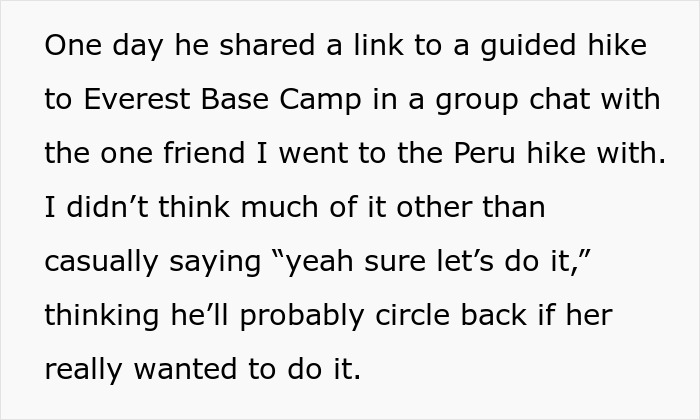
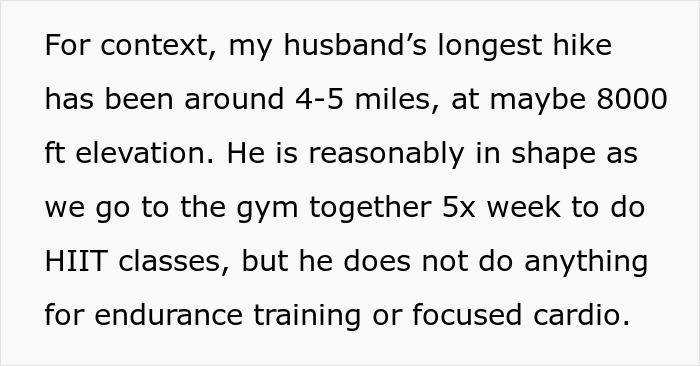
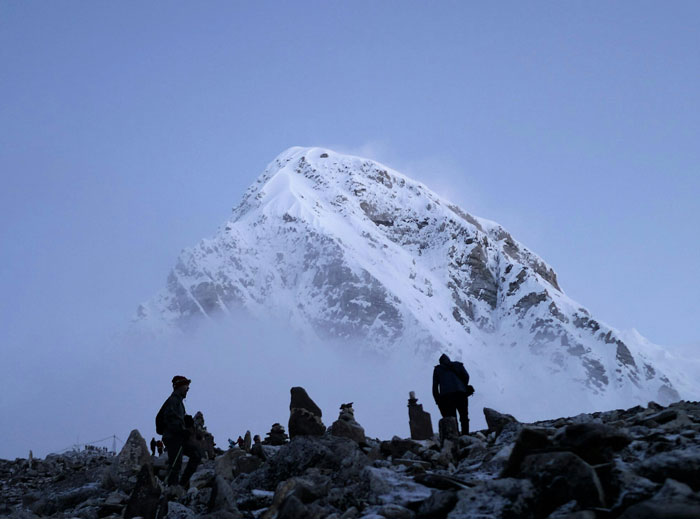
Image credits: Michael Clarke / Unsplash (not the actual photo)


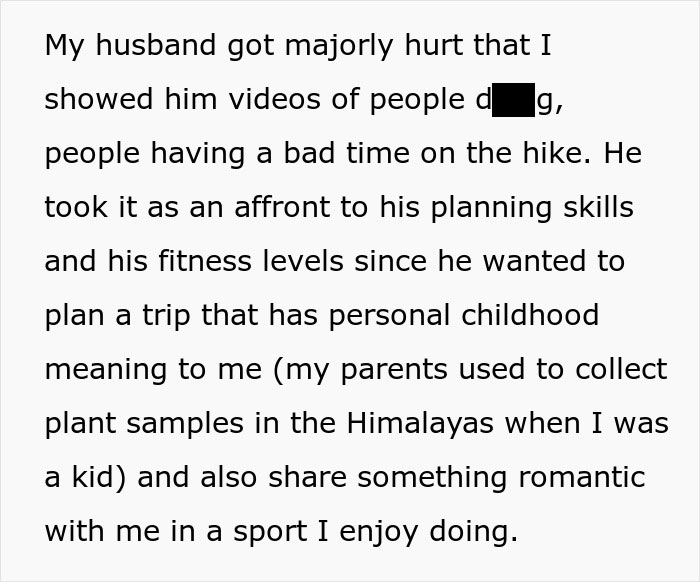

Image credits: rawpixel.com / freepik (not the actual photo)
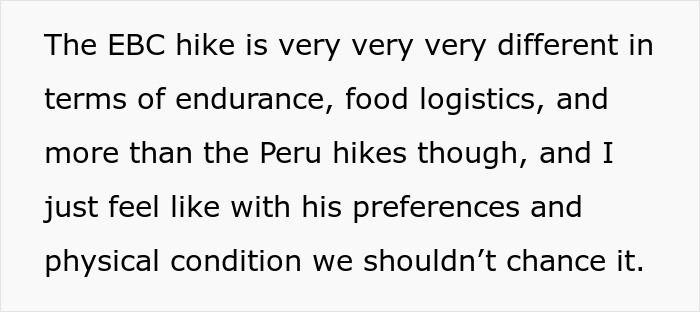

Image credits: Fluffy_Sandwich8575
Tackling a trek requires both physical stamina and mental resilience; it’s as much a challenge for your mind as it is for your body
Climbing a mountain isn’t just a physical challenge: it’s a test of determination, patience, and mindset. Anyone who’s done even a short hike will tell you it’s not just about walking uphill; it’s about pushing past limits, facing unpredictable weather, and embracing the journey one step at a time. Whether it’s your first small trek or an ambitious climb like Everest Base Camp, preparation is key.
A proper trek is usually a long, demanding adventure spread over several days through rugged, remote terrain. You’re not just walking on a flat trail, you’re dealing with rocky paths, steep climbs, and unpredictable weather. Before setting off on any trek, there are some non-negotiables to consider.
The first? Physical fitness. You can’t expect to struggle after a short walk and then suddenly take on a multi-day mountain trek — your body simply won’t cooperate. Many hikers train for weeks, if not months, building stamina and strength. Walking long distances, climbing stairs, and practicing with a backpack helps you adapt. Remember, trekking is not just about reaching the summit; it’s about sustaining your energy throughout the journey.
Additionally, cardiovascular conditioning plays a huge role in preparing for a trek. Running, swimming, or cycling can improve lung capacity and endurance, both of which are vital when you’re hiking for hours at high altitudes. Practicing hikes with varying elevations also helps your body adapt to the strain. Even short weekend hikes can prepare your muscles for the long haul. It’s not about speed, but consistency. The fitter you are, the more you’ll enjoy the trek, instead of gasping for air halfway up the hill!
According to Lonely Planet, altitude is no joke. Acute Mountain Sickness (AMS) can hit anyone trekking above 2,500 meters (8,200 ft). To avoid it, acclimatization is crucial. Some people start feeling the effects like headaches, nausea, or sleeplessness, above 3,000 meters, and almost everyone notices changes by 4,000 meters. The higher you go, the less oxygen there is. That’s why professional guides often include rest days in their itineraries, to give your body the time it needs to adjust safely.
Staying hydrated is essential when climbing, especially at higher altitudes where your body loses fluids faster
Everyone reacts differently to altitude. Some hikers adapt quickly, while others struggle even if they’re in top shape. Fitness helps, of course, and a healthy heart and lungs make things easier, but there’s no guarantee that a marathon runner will handle altitude better than someone who’s relatively new to fitness. It all depends on how your body reacts to thinner air. The golden rule? Take it slow, listen to your body, and never push through symptoms like dizziness or extreme fatigue.
Now, let’s talk about something that can make or break your trek: clothing. Dressing for the weather can literally save your trip. Always layer up so you can adjust to temperature changes as you climb. A waterproof rain jacket, a warm fleece, and a solid pair of gloves are must-haves. If there’s snow or heavy wind, thermal innerwear helps a lot. And yes, trekking poles might seem unnecessary, but they can be lifesavers when you’re balancing on rocky slopes or navigating steep descents.
Shoes might seem like a small detail, but ask any trekker — they’re everything. Never wear brand-new boots on a long trek unless you want painful blisters halfway through. Breaking them in a few weeks before your trip is a must. Try walking uphill, downhill, and on uneven terrain to make sure they fit comfortably. A sturdy, well-broken-in pair of boots offers stability, grip, and comfort — three things that matter more than style when you’re miles away from civilization.
Hydration is another underrated aspect of trekking. At high altitudes, your body dehydrates faster than usual, even if you don’t feel sweaty. Sipping water regularly (not just when you’re thirsty) helps prevent headaches, fatigue, and altitude sickness. Many trekkers also bring electrolyte packs or sports drinks for added energy. The rule of thumb? Drink before you’re thirsty and eat before you’re hungry. That simple habit can make all the difference between a miserable climb and an enjoyable one.
Beyond physical preparation, trekking also demands mental strength. It’s about perseverance, pushing forward even when your legs ache and the summit feels impossibly far. Staying positive and mindful helps you appreciate the journey instead of obsessing over how much is left.
In this particular story, it seemed the woman was worried her partner wasn’t quite ready for the demanding Everest Base Camp trek. What about you: do you think she overreacted? Have you ever been on a challenging hike that tested your limits? Tell us your thoughts and maybe your favorite trekking memory too!
People online had mixed reactions to her story — while a few sympathized with her worries, others felt the couple needed to work on their communication and expectations


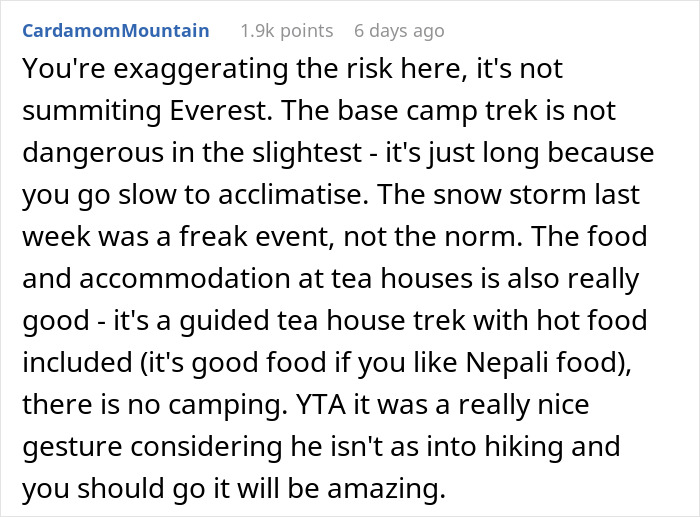
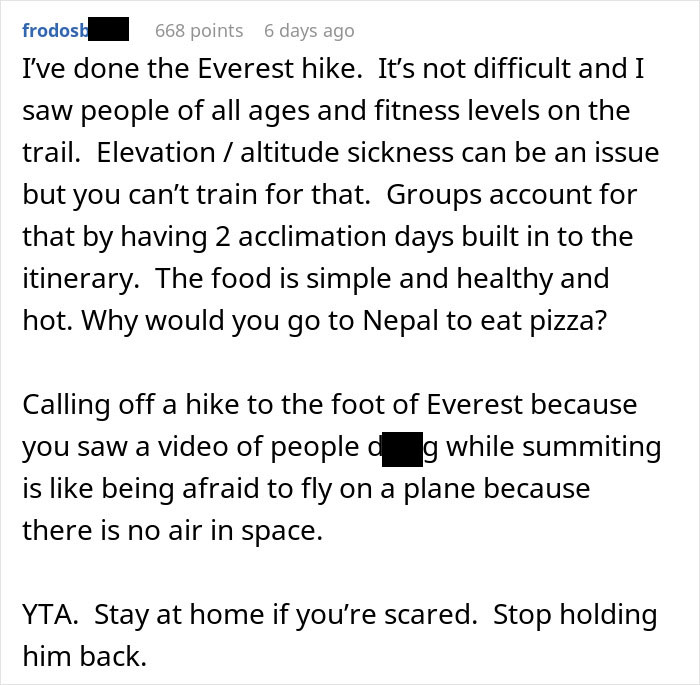



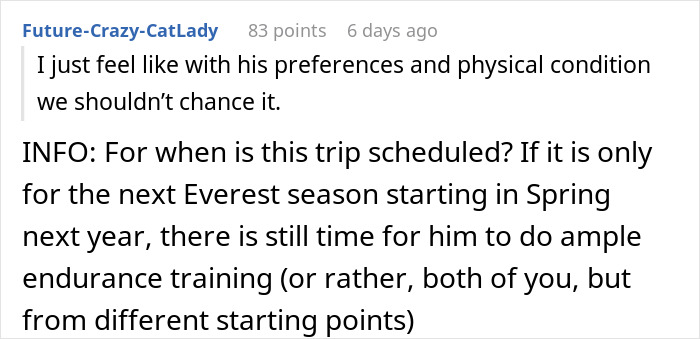

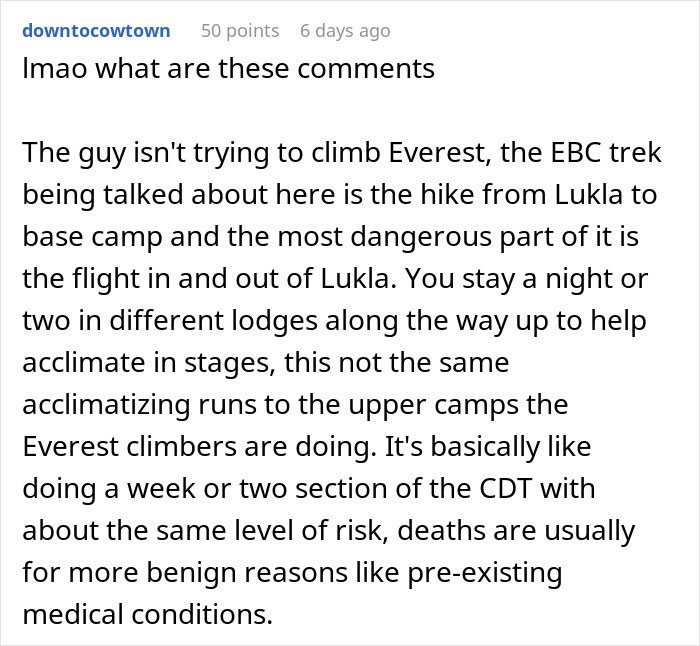





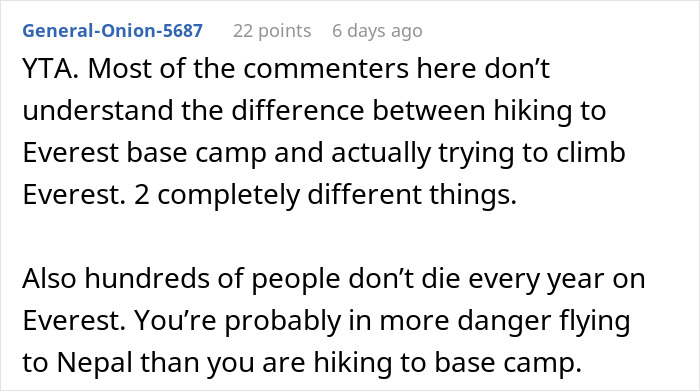





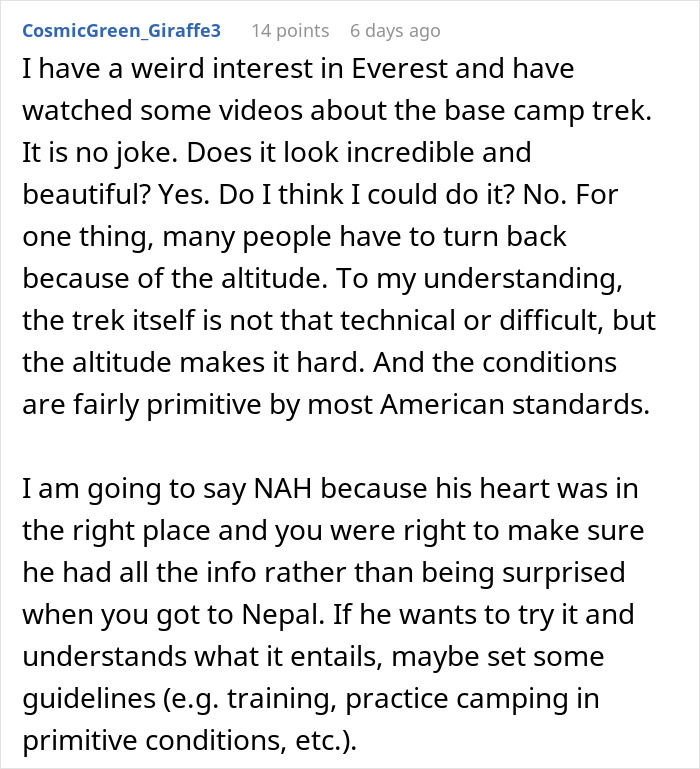

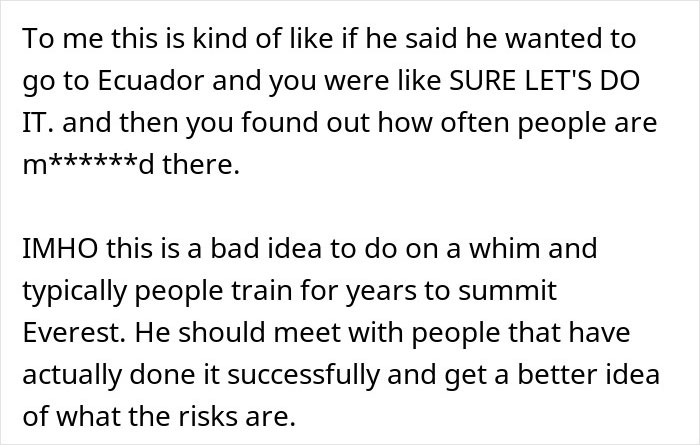
 Follow Us
Follow Us





